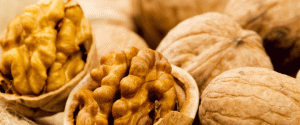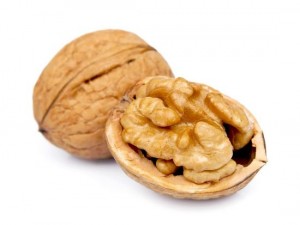Wakefield Valley has been growing walnuts since 2002, but the shallow soils and dry climate has challenged the development of the full orchard. Since 2011, and with some changed management and renewed vigour, the walnuts are now back under control.
Chandler and Tulare, are the main varieties with small numbers of Esterhazy, Sunland and Howard. Some of the original root stock were not suitable for the Clare Valley and were replanted, but the J. Henzii, and more recently Paradox root stock are loving the area.
The soil has been a major challenges as it is quite shallow over a limestone base. We contoured the block into 1 metre high rows, 8 metres apart, and once the trees can get their roots down into the limestone they do well.
This is supplemented by irrigation and we are using a partial root zone drying regimen to conserve water, and the trees are doing really well.
Only about 20% of the 2,500 trees are in production, but the gaps have been filled and growth is impressive. Walnuts are a crop of the future.
Walnuts are an excellent source of many nutrients:
A walnut is the nut of any tree of the genus Juglans, particularly the Persian or English walnut, Juglans regia. Technically a walnut is the seed of a drupe or drupaceous nut, and thus not a true botanical nut.
|
Amount Per 100 grams |
| Calories 654 |
| % Daily Value* | |
| Total Fat 65 g | 100% |
| Saturated fat 6 g | 30% |
| Polyunsaturated fat 47 g | |
| Monounsaturated fat 9 g | |
| Cholesterol 0 mg | 0% |
| Sodium 2 mg | 0% |
| Potassium 441 mg | 12% |
| Total Carbohydrate 14 g | 4% |
| Dietary fiber 7 g | 28% |
| Sugar 2.6 g | |
| Protein 15 g | 30% |
| Vitamin A | 0% | Vitamin C | 2% |
| Calcium | 9% | Iron | 16% |
| Vitamin D | 0% | Vitamin B-6 | 25% |
| Vitamin B-12 | 0% | Magnesium | 39% |
| *Per cent Daily Values are based on a 2,000 calorie diet. Your daily values may be higher or lower depending on your calorie needs. |


